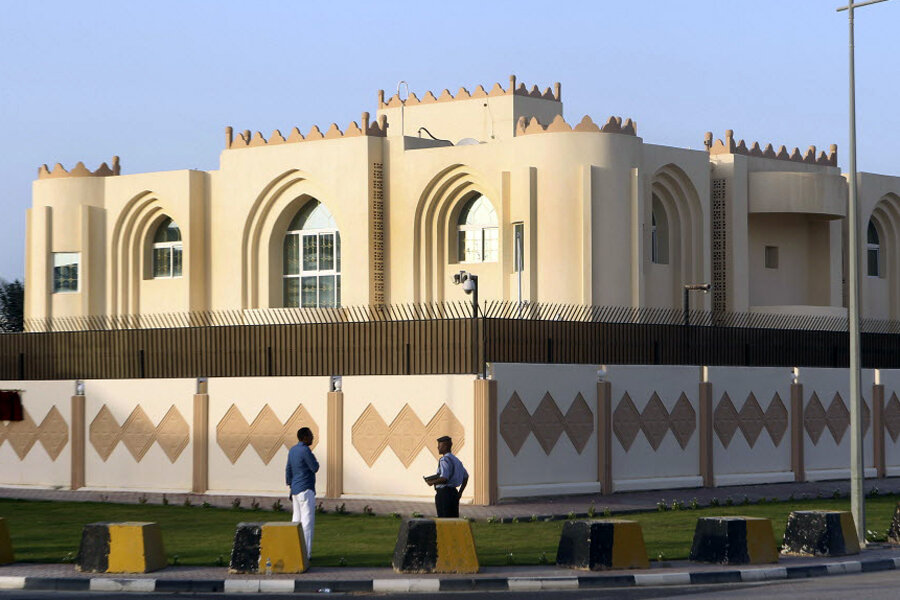Do we know how much US money is going to the Taliban in Afghanistan?
Loading...
Last week I wrote about the clearly frustrated letter John F. Sopko, the US government's Special Inspector General for Afghanistan Reconstruction, wrote to Congress about the difficulty the US seems to have with stemming the flow of US taxpayer money to the Taliban and Al Qaeda.
Mr. Sopko wrote that a failure to monitor an ongoing $20 billion reconstruction effort in Afghanistan, designed to help the US achieve its war objectives, is threatening the mission. In his words, there "appears to be a growing gap between the policy objectives of Washington and the reality of achieving them in Afghanistan."
Since then, I've done some more reading about the specific allegations over Pentagon, US Agency for International Development (USAID), and other branches of the US government giving lucrative contracts to supporters of the very people that US soldiers are in Afghanistan to fight.
Last October SIGAR sent a letter to the State Department, USAID, and the US Central Command (Centcom) calling for "immediate action to prevent individuals and entities actively supporting the insurgency" from obtaining contracts or grants from the US government, and identified 20 individuals, companies, and charities as problems.
It turned out that while Centcom head Gen. James N. Mattis barred the 20 entities from doing business with the US military since they were, in his determination, "actively supporting an insurgency," other branches of the sprawling US spending effort in Afghanistan weren't being informed of his decisions. This includes, most importantly, USAID and the State Department. SIGAR thought it best for the rest of the US Afghanistan effort to be brought into the loop.
October 2012 came more than a decade after the US spending spree in Afghanistan had begun, and in all that time a coordinated effort to prevent the funding of the very people who had killed over 2,000 US troops and far more Afghan soldiers and civilians was not developed.
Has much improved since? It doesn't seem so. And the Pentagon is part of the problem, too. At the end of July SIGAR reported that 43 companies or individuals with ties to America's enemies were deliberately being allowed the chance to receive US contracts:
A continuing problem is the Army’s refusal to act on SIGAR’s recommendations to suspend or debar individuals who are supporters of the insurgency, including the Taliban, the Haqqani Network, and al-Qaeda. The Army suspension and debarment official has taken the position that suspension or debarment of such individuals and entities would be a violation of their due process rights if based on classified information or if based on findings by the Department of Commerce which placed them on the Entities List. SIGAR has referred 43 such cases to the Army, and all have been rejected, despite detailed supporting information demonstrating that these individuals and entities are providing material support to the insurgency in Afghanistan. In other words, they may be enemies of the United States, but that is not enough to keep them from getting government contracts.
Concerns about the due process rights of Al Qaeda funders is a bit odd. But in the bizarro world of US government spending in Afghanistan, you can see that many things are possible. And it's worth remembering that there's plenty that SIGAR doesn't know. In Afghanistan, contracts are often awarded to companies that might appear clean, but then are subcontracted two, three, sometimes four times.
How much money are we talking about? SIGAR reports that in the nine months following July 2012 it recommended that 103 companies and individuals be barred from continued US government contracting in Afghanistan over "allegations of theft, fraud, poor performance, financial support to insurgents, and mismanagement." The value of the contracts affected in that period was over $165 million.
SIGAR doesn't break out how much of that actually went to Taliban and Al Qaeda affiliates. In a footnote in one of its reports, SIGAR refers to eight subcontracts being terminated last year because some of the money was flowing to the Taliban, saying that $5 million had already been paid out at the time of termination.
How are USAID and State doing? Ok, for now. SIGAR says neither is currently giving money to known Taliban financiers, but worried they might be forced to down the road. While the Defense Appropriations Act of 2012 governs Pentagon spending in Afghanistan and has a section prohibiting contracting with the enemy, there is no such rule for those two civilian organizations. In practice, SIGAR says, this means that the two organizations have limited ability to legally terminate contracts later if the recipients are found to be paying the Taliban.
Sometimes efforts to stop paying the Taliban are overruled. In January of this year CENTCOM designated Kam Air, owned by the politically-connected Zamari Kamgar, as a supporter of the insurgency. The US military alleged the company was involved in bulk opium smuggling out of Afghanistan and that much of the revenue generated was funding Afghanistan's insurgency and wanted it disbarred from US contracts. But the government of Afghan President Hamid Karzai disagreed.
Is Kam Air currently receiving US taxpayer money? Hard to say. It doesn't currently have any direct contracts with the US government, but the pyramid of sub-contracting and payments to suppliers in Afghanistan is dizzying and with most raw materials for most jobs in Afghanistan being imported, the chances that business is still flowing its way from contractors and subcontractors is large. And the Afghan government, largely financed by the US and other donors, does continue to do business with the airline. For instance, President Karzai has often chartered Kam Air flights for travel abroad.








